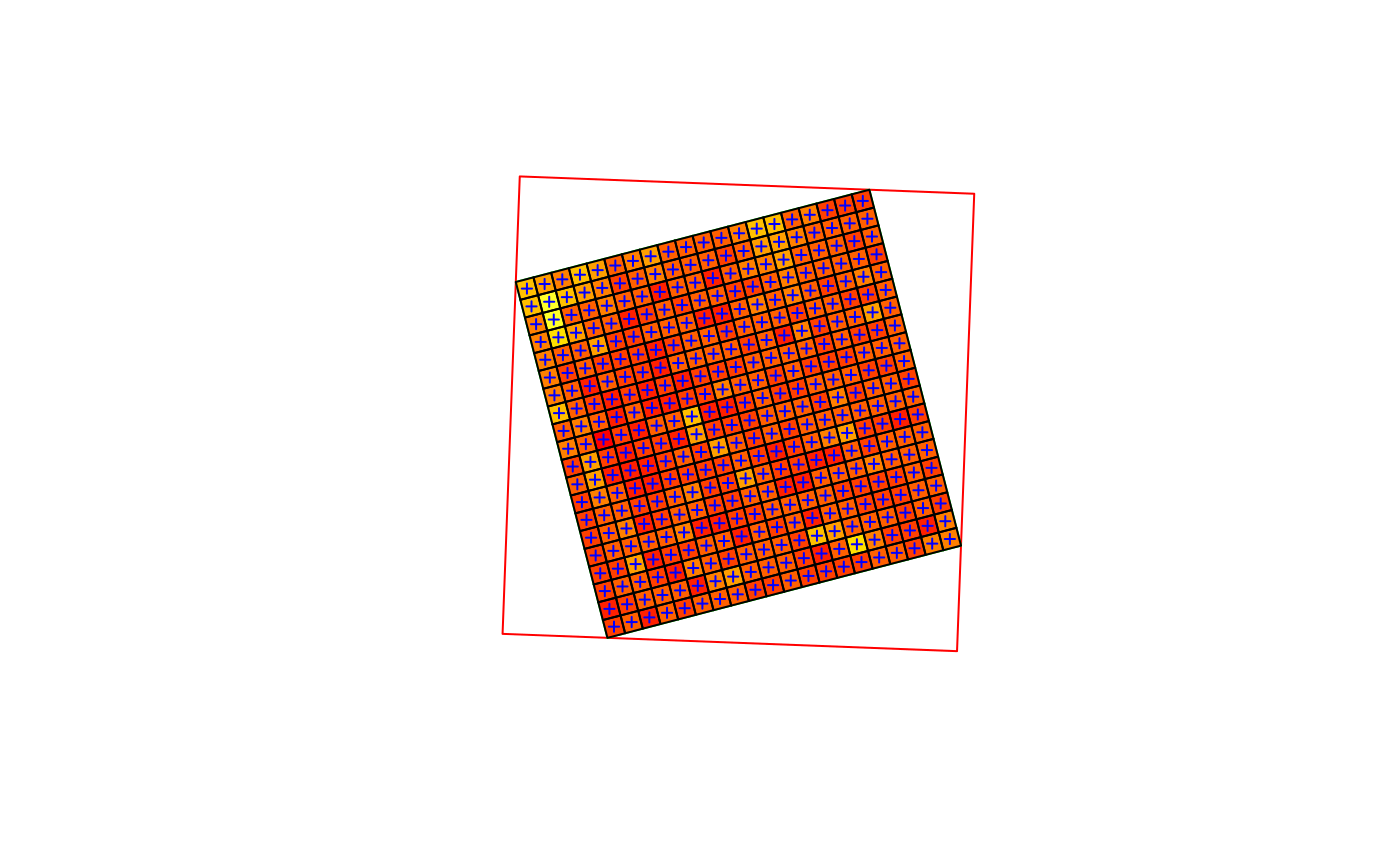transform geometries in stars objects to a new coordinate reference system, without warping
Source:R/transform.R
st_transform.Rdtransform geometries in stars objects to a new coordinate reference system, without warping
Details
For simple feature dimensions, st_transform is called, leading to lossless transformation. For gridded spatial data, a curvilinear grid with transformed grid cell (centers) is returned, which is also lossless. To convert this to a regular grid in the new CRS, use st_warp (which is in general lossy).
If array values contain geometries and an array as a whole is of class `sfc` and has a non-missing CRS, array geometries are also transformed.
Examples
geomatrix = system.file("tif/geomatrix.tif", package = "stars")
(x = read_stars(geomatrix))
#> stars object with 2 dimensions and 1 attribute
#> attribute(s):
#> Min. 1st Qu. Median Mean 3rd Qu. Max.
#> geomatrix.tif 74 107 123 126.765 132 255
#> dimension(s):
#> from to offset delta refsys point x/y
#> x 1 20 1841002 1.5 WGS 84 / UTM zone 11N TRUE [x]
#> y 1 20 1144003 -1.5 WGS 84 / UTM zone 11N TRUE [y]
#> sheared raster with parameters: -5 -5
new = st_crs('OGC:CRS84')
y = st_transform(x, new)
plot(st_transform(st_as_sfc(st_bbox(x)), new), col = NA, border = 'red')
plot(st_as_sfc(y, as_points=FALSE), col = NA, border = 'green', axes = TRUE, add = TRUE)
image(y, col = heat.colors(12), add = TRUE)
plot(st_as_sfc(y, as_points=TRUE), pch=3, cex=.5, col = 'blue', add = TRUE)
plot(st_transform(st_as_sfc(x, as_points=FALSE), new), add = TRUE)
